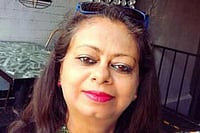Tiny Qatar, with a per capita wealth of $128,930 (IMF, 2018), often tops the list of world’s richest countries. Despite its wealth, however, capital city Doha seems sedate, somnolent even, as I get driven from the swanky Hamad International Airport to my hotel on a sunny morning.
En route, my impression about the city gets further reinforced through its sombre architecture—uniformly beige in colour—the monotony of which is broken only occasionally by a phalanx of anodyne, glass-fronted buildings.
This first impression, however, changes dramatically as I begin to peel the city’s layers one by one over the course of my four-day stay. A whole new Doha emerges then. Of spiffy malls, fun-loving people, glitzy hotels, eateries helmed by Michelin-anointed chefs, malls brimming with international goodies and atmospheric souks. A Janus-faced city? Perhaps.
Though oil and natural gas have kept Qatar’s economy humming, there’s a new emphasis on tourism. Qatar is upping its ante to attract visitor footfalls. Shiny new roads, hotels, neighbourhoods and entire towns (including the estimated $45 billion Lusail!) pepper its landscape today.
The city’s first metro system, built at a whopping $36 billion, is on track to open in 2019. There’s frenzied excitement as well about football’s greatest tournament —the FIFA World Cup—that Doha will host in 2022. The event expects to draw 1.5 million visitors, that’s half of the country’s three million.
FIFA’s preparations are moving apace. Swathes of south Doha are dotted with whirring cement mixers, construction equipment and labourers, mostly from India, putting in place eight state-of-the-art stadiums. The frenetic pace of construction seems all the more remarkable considering the supply of all materials was halted abruptly after Saudi Arabia, the United Arab Emirates and their allies, froze relations with Qatar in 2017. Unfazed, the World Cup mandarins switched to Malaysia and China for imports. Now, things are moving so fast that some of the venues are already in place. It’s not coming cheap though. Insiders whisper the Gulf nation is shelling out $500 million a week for a glitch-free event.























